Climate Vulnerability Assessments
For extensive livestock, the selected commodities and grazing systems were:
- Beef cattle (Bos taurus)
- Sheep (Merino)
- High rainfall zone grazing systems (high stocking rate)
- Mixed cropping zone grazing systems (medium stocking rate)
- Rangeland grazing systems (low stocking rate)
Visit each page for more information about the commodity or grazing system and to view their factsheets and results reports.
Results
The Climate Vulnerability Assessment modelled the historical and future climate suitability for each commodity across NSW. These assessments considered the change in suitability between the historical (1981-2010) and future time periods (2036-2065), reported separately for the two emissions scenarios.
Maps of historical and future climate suitability for extensive livestock were produced to identify where in the state a commodity is likely to thrive or else be limited by future climatic conditions. The maps are provided in the results reports and the factsheets below list the important impacts and provide interpretation of the drivers of changing climate suitability.
Care should be taken when interpreting these results. The Climate Vulnerability Assessment is intended to highlight potential changes in future climate suitability at industry and regional levels. It should not be interpreted at the scale of individual holdings.
Factsheets
Cattle factsheet
PDF, 392.75 KB
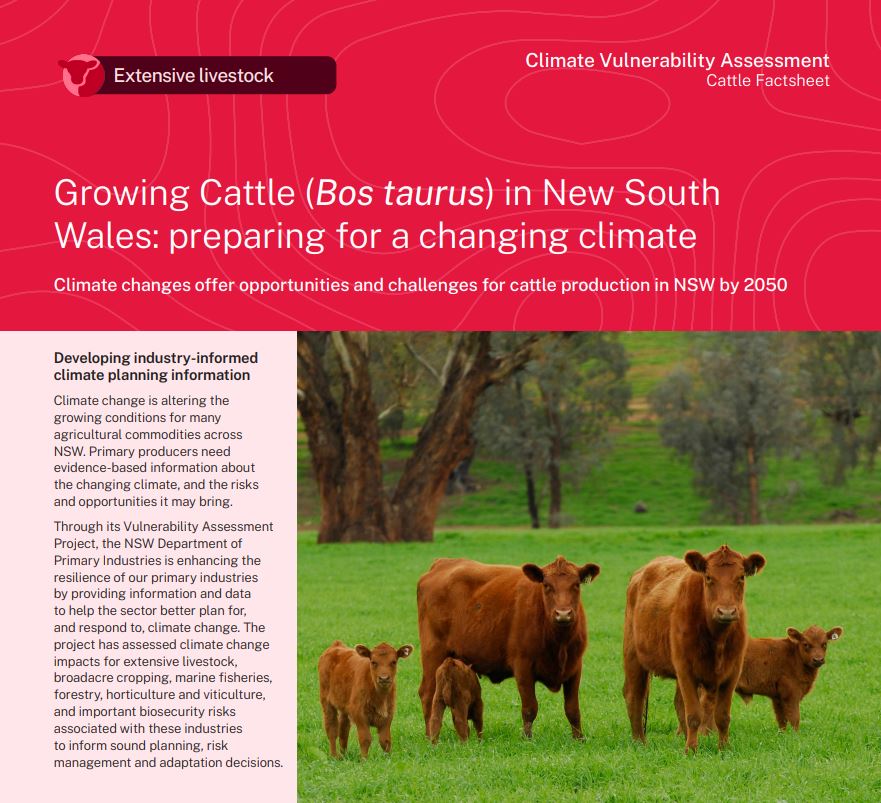
Sheep factsheet
PDF, 2904.11 KB
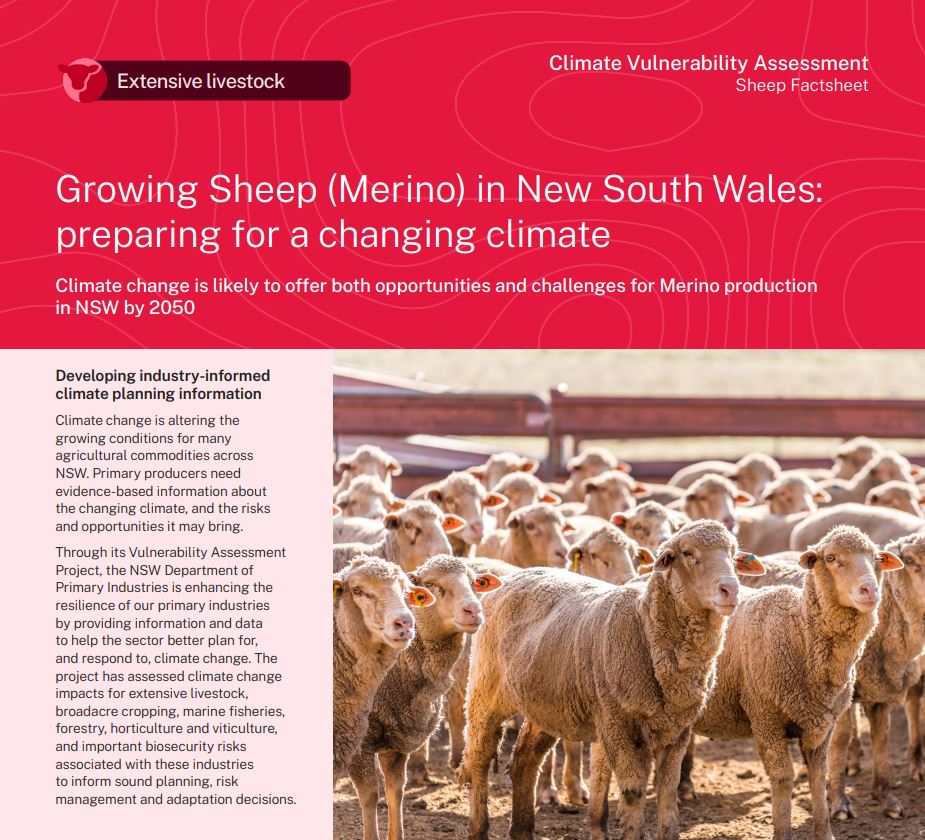
High rainfall zone grazing system factsheet
PDF, 2404.4 KB
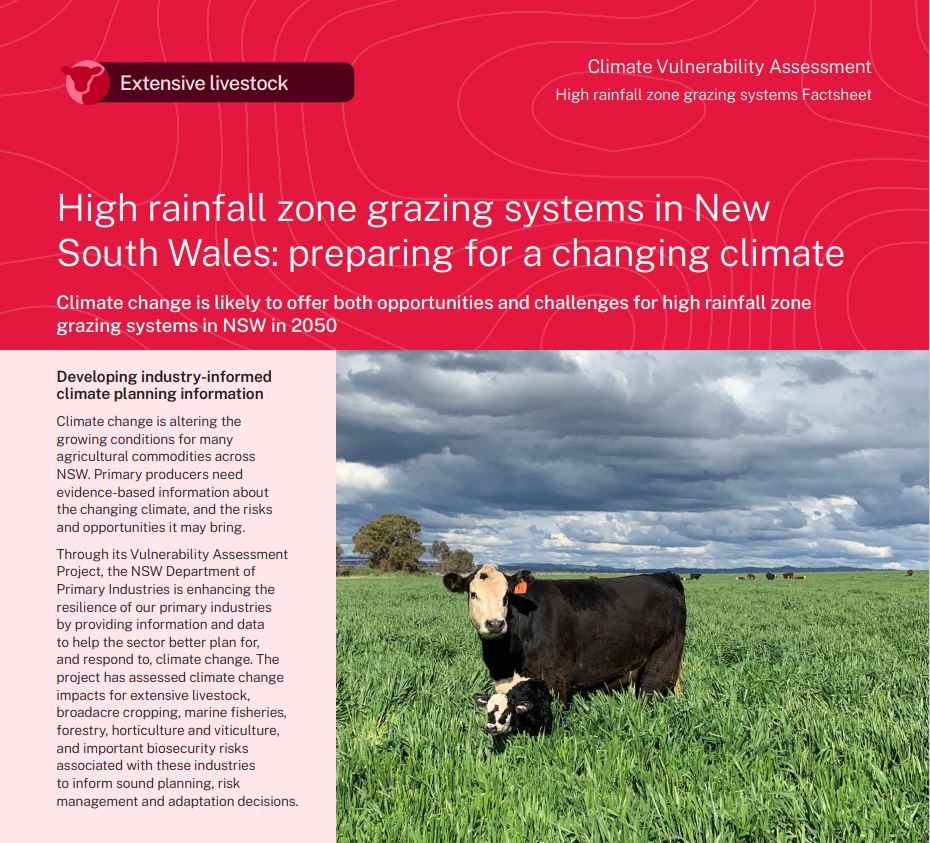
Mixed cropping grazing system factsheet
PDF, 1406 KB
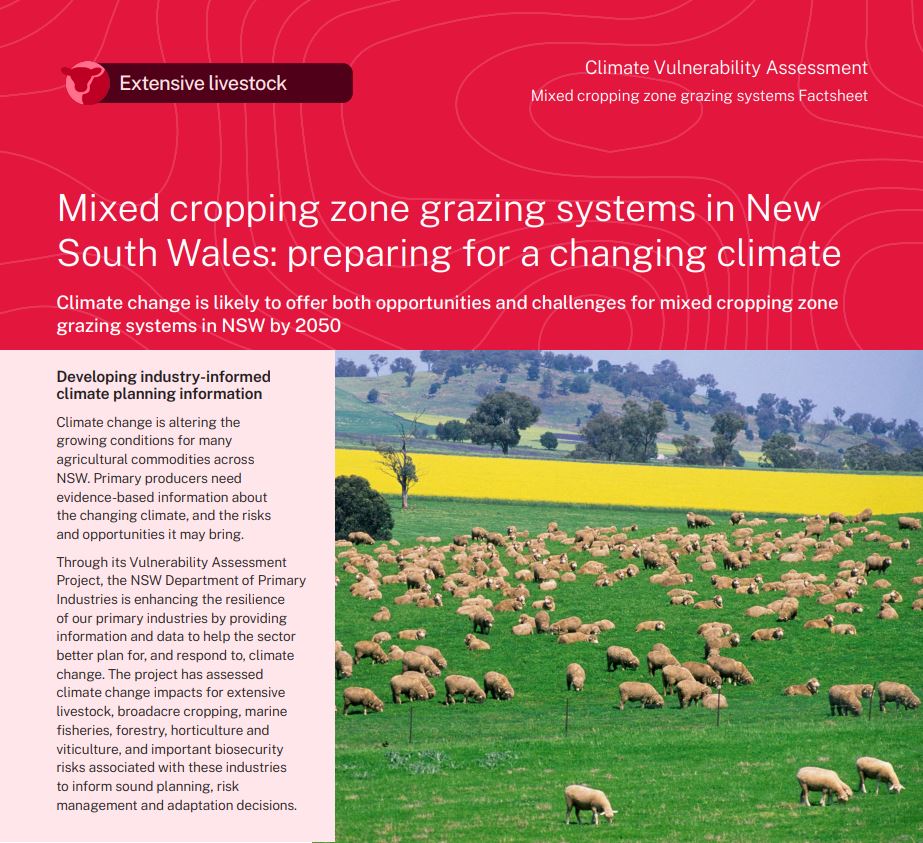
Rangeland grazing system factsheet
PDF, 1333.99 KB
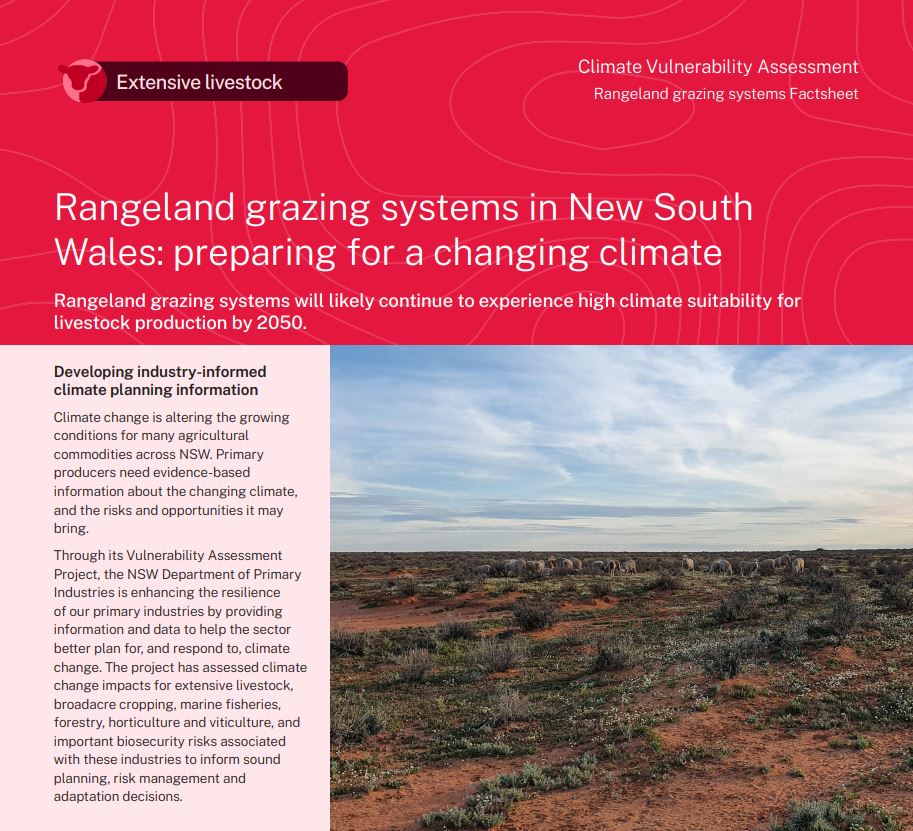
Approach
The Climate Vulnerability Assessment required a modelling approach that could be rapidly and consistently applied to different commodities and biosecurity risks to produce consistent and comparable models. To this end, a framework was developed which combined research literature, expert industry knowledge and climate data in a modelling approach known as ‘multi-criteria analysis’ (MCA model). The resulting MCA models were used to evaluate the suitability of NSW’s climate for chosen commodities and biosecurity risks
The general assumptions for extensive livestock MCA models were:
- best practice management is undertaken,
- the livestock or pastures are free of pests and diseases, and
- dates of production phases are fixed.
- for livestock:
- a specific breed is selected,
- adequate feed and water are available, and
- specific joining and calving dates were selected and are not necessarily appropriate for all livestock operations in NSW;
- for grazing systems:
- Stocking rates were selected to be representative of the system. In this model, rangeland grazing systems use a 0.5 DSE/ha stocking rate, mixed cropping zone grazing systems use a 5.2 DSE/ha stocking rate and high rainfall zone grazing systems use a 19 DSE/ha stocking rate for sown pastures and 10 DSE/ha for stocking rate for native pastures.
These stocking rates do not allow for common constraints — particularly soils — which are likely to reduce carrying capacity and must be considered alongside the climate suitability reported by this project when setting or estimating stocking rates for any specific parcel of land.
- Stocking rates were selected to be representative of the system. In this model, rangeland grazing systems use a 0.5 DSE/ha stocking rate, mixed cropping zone grazing systems use a 5.2 DSE/ha stocking rate and high rainfall zone grazing systems use a 19 DSE/ha stocking rate for sown pastures and 10 DSE/ha for stocking rate for native pastures.
For more information on the methodology and data used in the climate vulnerability assessments, please refer to either the methodology summary page or, for an in-depth explanation, the Climate Vulnerability Assessment Methodology Report.
References
ABS (2018)7121.0 - Agricultural Commodities, Australia, 2017-18 7121.0 - Agricultural Commodities, Australia, 2017-18. Australian Bureau of Statistics, accessed 9 October 2023.
MLA (2019) The red meat industry. Meat and Livestock Australia, accessed 9 October 2023.
MLA (2023) State of the industry report 2022: the Australian red meat and livestock industry, Meat and Livestock Australia, accessed 9 October 2023.